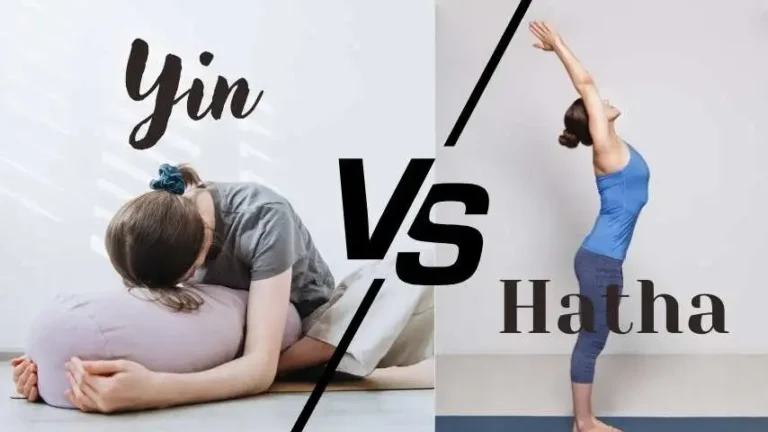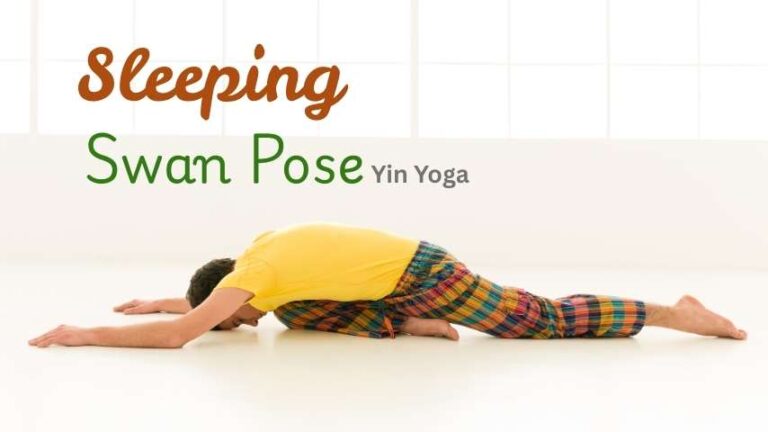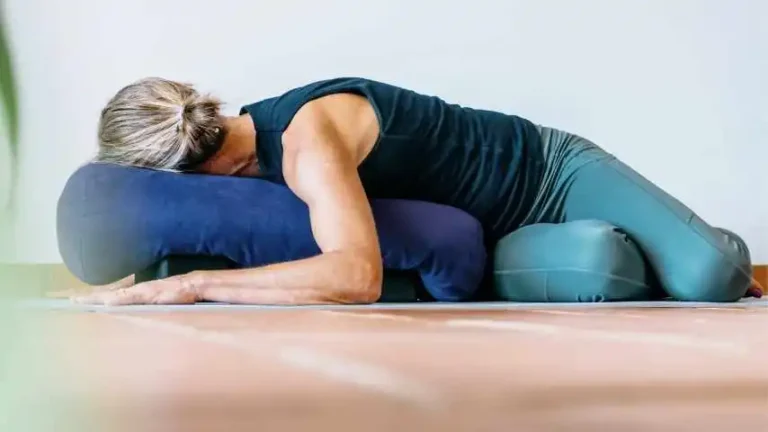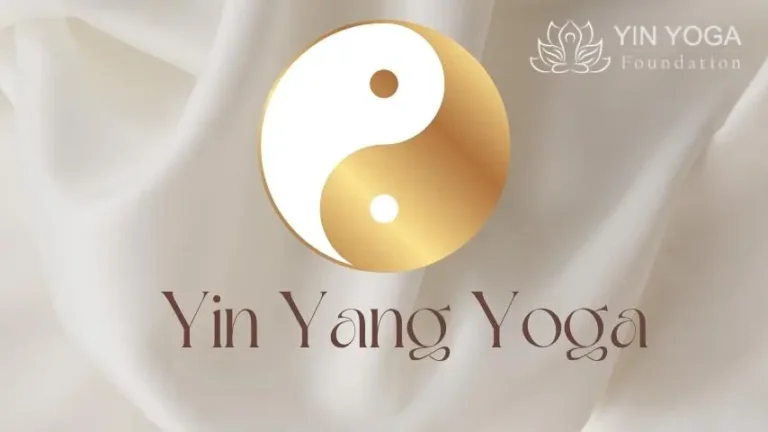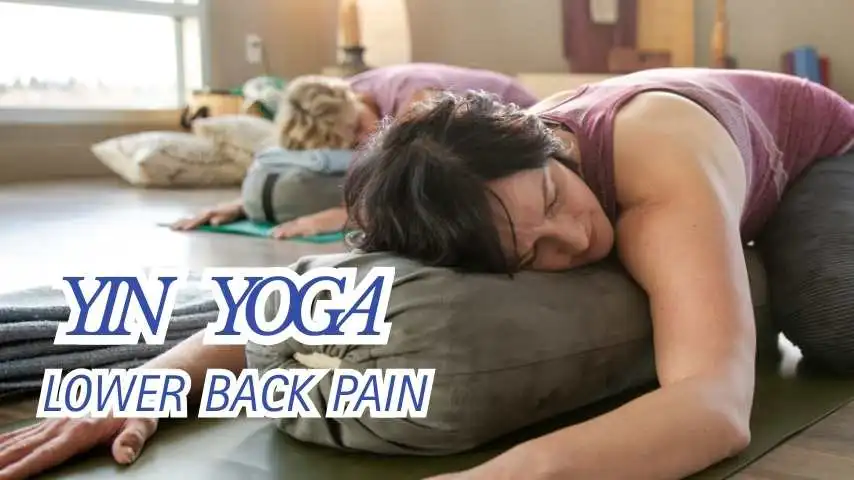
Lower back pain has become a common occurrence in the modern world. Millions of people have lower back pain. This pain can come from stress, sitting too long, bad posture, or injuries. Yin yoga is a holistic approach that has gained popularity.
Yin Yoga is a slow and meditative type of yoga. It focuses on connective tissue like ligaments, joints, and fascia.
It does not just focus on muscles. Especially helpful for chronic pain conditions such as lower back pain. This guide will look at Yin Yoga and how it helps with lower back pain. The training will also cover key poses and safe practice tips.
What is Yin Yoga?
Yin Yoga is a passive form of yoga rooted firmly in Taoist philosophy and traditional Chinese medicine. Yin Yoga encourages stillness and surrender. Different from active forms of yoga like Vinyasa, Power Yoga, or Vinyasa.
What makes Yin Yoga so unique?
- Long Hold: Practitioners hold poses for 3 to 5 minutes (sometimes longer).
- Targeting connective tissue: The focus is on ligaments, fascia and joints, rather than muscles.
- Cool Body: Use cold muscles to safely stress connective tissue.
- Minimal Movement: Few Transitions; More Emphasis on Stillness and Breath.
- Encouraged Props: Blankets and bolsters help support the body during each pose.
Why Yin yoga for lower back pain?
The lower back, or lumbar spine, supports the body. This makes it prone to stiffness and strain. Yin Yoga helps reduce or eliminate back pain by:
1. Fascial release
Fascia is a web-like connective tissues that surrounds the muscles and organs. When fascia is tight, it causes discomfort and restricts movement. Yin poses softly extend and moisturize the fascia to enhance flexibility and release.
2. Joint Mobility
Yin Yoga targets the hips and sacrum. These areas are important for lower back health. Better joint mobility helps reduce tension in the lower back.
3. Stress Reduction
Chronic stress increases inflammation and tightens muscles. Yin’s meditative qualities calm the nervous system and reduce cortisol, enhancing parasympathetic activities–essential to healing.
4. Improved Circulation
Holding poses for a long time helps blood flow in the connective tissue. This promotes nutrient absorption and waste removal.
5. A Balance between Strength and Flexibility
Yin does not build muscle strength but it allows for more effective strength training by creating the space. Increased flexibility in areas such as the hips and hamstrings supports long-term back health.
The Best Yin yoga poses for Lower Back Pain
1. Caterpillar Pose – Seated Forward Fold
How do you do it?
- Sit with legs extended.
- Fold your spine forward and over the legs.
- Rest your arms wherever you want and let your head hang.
- Hold for 3 to 5 minutes.
Benefits:
- Stretches spine and hamstrings.
- Releases tension from the lower back.
- Calms down the nervous system.
Props:
Support your knees and torso with a bolster, rolled blanket or pillow.
2. Sphinx Pose
How do you do it?
- Lean on your stomach.
- Bring your elbows underneath your shoulders and your forearms parallel.
- Relax your glutes, lower back and lower legs.
- Hold for 3 to 5 minutes.
Benefits:
- The spine is gently compressed.
- Stimulates kidneys and abdominal organs.
- It encourages the extension of the spine and counteracts slouching.
Modifications:
If you feel discomfort, rest your chest or move your elbows forward.
3. Reclining Twist
How do you do it?
- Lean backwards.
- Grab your knees and hug them to your chest.
- Turn your head the other way while bending both knees on one side.
- Hold each side for 3-5 minutes.
Benefits:
- Releases tension from the lower back and spine.
- Spinal mobility is improved.
- Aids digestion and detoxification.
Support:
For less intense massage, place a block or pillow under your knees.
4. Banana Pose (Side Body Stretch)
How do you do it?
- Lean backwards.
- Slide the feet and upper body right to form a banana.
- Cross your left ankle over to the right.
- Extend your arms overhead.
- Hold each side for 3-5 minutes.
Benefits:
- Stretches the side body, QL and IT bands.
- Relieves tightness in the lateral back.
Prop Tip:
The use of a bolster beneath the arms will reduce shoulder tension.
5. Supported child’s pose
How do you do it?
- Kneel, with your big toes together and your knees apart.
- Fold your body forward and rest your chest on a bolster, or stack of blankets.
- Relax your arms forward or along the bolster.
- Hold for five minutes.
Benefits:
- Lengthen the spine gently.
- Calms your mind.
- Releases tension from the sacrum and hips.
Breathwork in Yin Yoga and Mindfulness
Yin Yoga is not just about posture. Breath and awareness, as well as physical posture, are also important, particularly for managing pain.
1. Diaphragmatic breathing
Deep belly breathing helps muscles and fascia to release. To stimulate relaxation, inhale 4 counts and exhale 6 counts.
2. Body Scanning
While holding a posture, bring attention to various parts of your body. Observe your sensations without judging them. You can identify the areas where you are tense and let go.
3. Visualization
Imagine sending warmth or breath to the area that is uncomfortable. This can help create a feeling of spaciousness, and reduce the perception of pain.
Practice Yin safely with lower back pain
Yin Yoga may be gentle, but there are risks involved–especially if you’re working with pain. These tips will help you:
1. Pain Is a Signal
Not sharp pain. If you feel something is wrong, modify your pose or back off.
2. Make Props Available
Props aren’t crutches, they’re tools. You can relax into the pose without straining.
3. Avoid cold Starts
Before diving into long hold, do a few gentle movements like cat-cows or hip circles.
4. Listen to the Edge of Your Body
Find your “edge”. This is the place where you can breathe deeply, but still remain still. Do not push beyond this point.
5. Consult with a Professional
Seek advice from a qualified yoga therapist or medical professional if you believe your lower back discomfort might be caused by sciatica or herniated discs.
Recommended Sequence (30 minutes)
- Supported child’s pose – 5 min
- Sphinx Pose – 4 min
- Caterpillar Pose – 5 min
- Banana Pose (Right) – 3 min
- Banana Pose (Left) – 3 min
- Reclining Twist (Right) – 5 min
- Reclining Twist (Left) – 5 min
Close by doing 5 minutes of Savasana, lying flat on your back with your knees bent and supported underneath the calves.
Final Thoughts
Yin Yoga is a powerfully healing method for managing and relieving lower back pain. It works by focusing on being still and mindful. It also gently stretches deeper tissues that regular exercise often ignores. Consistency, patience and an openness to exploring your inner landscape are the keys.
While Yin Yoga is not a miracle cure, it can transform your back care routine when you practice it regularly and with mindfulness.

